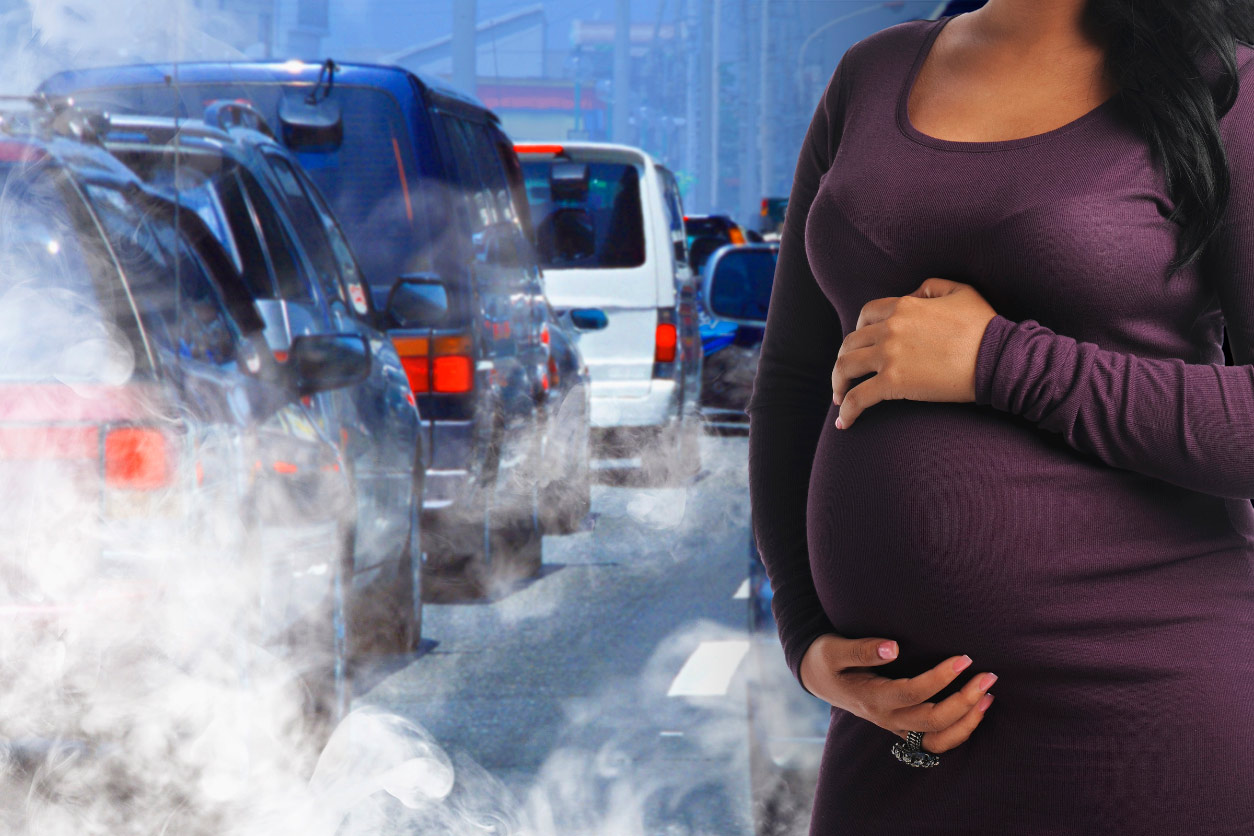A new report from the National Toxicology Program (NTP) suggests that traffic-related air pollution increases a pregnant woman’s risk for dangerous changes in blood pressure, known as hypertensive disorders of pregnancy.
NTP scientists evaluated published research on the link between hypertensive disorders of pregnancy and traffic-related air pollution, or TRAP (see sidebar), broken down by measurements of TRAP, such as fine particulate matter (PM2.5).
 “Children are especially sensitive to air pollution,” said Beverly. “There is increasing evidence that exposure to TRAP may impact pregnancy outcomes and child development.” (Photo courtesy of Steve McCaw)
“Children are especially sensitive to air pollution,” said Beverly. “There is increasing evidence that exposure to TRAP may impact pregnancy outcomes and child development.” (Photo courtesy of Steve McCaw)“What we found when we reviewed the literature is that exposure to PM2.5 from traffic emissions was associated with development of hypertensive disorders in pregnant women,” said Brandy Beverly, Ph.D., NTP lead scientist for TRAP. “When these women were exposed to PM2.5 during their entire pregnancy, the likelihood of developing preeclampsia increased by about 50%.”
Risk for premature birth
NTP evaluated other components of TRAP, including nitrogen oxides, carbon monoxide, black carbon, and elemental carbon, along with parameters like traffic density and mothers’ proximity to main roads. The literature suggests that women who live within a quarter of a mile of a major roadway or in high traffic density regions may be at an increased risk for developing hypertensive disorders of pregnancy.
Hypertensive disorders of pregnancy complicate more than 10% of pregnancies worldwide and are a leading cause of maternal and fetal illness and death. According to the American College of Obstetricians and Gynecologists, mothers with hypertension during pregnancy are more likely to have a preterm delivery. Their infants are at greater risk for low birth weight and a range of long-term health problems associated with premature birth.
Collection of disorders
“Hypertensive disorders of pregnancy refer to a range of clinical conditions, all of which include high blood pressure during pregnancy,” said Beverly. “The disorders are classified into four distinct types, based on differences in the timing and onset of the symptoms.”
- Gestational hypertension — high blood pressure in the second half of pregnancy.
- Preeclampsia — high blood pressure with protein in urine or impaired liver or kidney function in the second half of pregnancy. If preeclampsia worsens and causes seizures, it becomes eclampsia, which is a serious condition for both mother and child, with the potential to be fatal.
- Chronic hypertension — or high blood pressure before or early in pregnancy that continues through childbirth, and sometimes beyond.
- Chronic hypertension with preeclampsia — high blood pressure before or early in pregnancy, continuing through childbirth, complicated by new-onset protein in the urine or impaired liver or kidney function.
 A new NTP report suggests that TRAP increases a pregnant woman’s risk for dangerous increases in blood pressure, known as hypertensive disorders of pregnancy.
A new NTP report suggests that TRAP increases a pregnant woman’s risk for dangerous increases in blood pressure, known as hypertensive disorders of pregnancy.
Using their standard four-tier scale — known, presumed, suspected, or not classifiable as a human health hazard — NTP looked at the combined evidence from the individual components. The scientists concluded that TRAP is a presumed human hazard for hypertensive disorders during pregnancy. They did not distinguish among the four types of hypertensive disorders.
NTP conducted the systematic review of published research after receiving a nomination from several pediatricians regarding emerging issues with air pollution and children’s health.
Citation: NTP. 2019. Systematic Review of Traffic-Related Air Pollution and Hypertensive Disorders of Pregnancy. NTP Monograph 7. Research Triangle Park, NC: National Toxicology Program.
(Sheena Scruggs, Ph.D., is the digital outreach coordinator in the Office of Communications and Public Liaison)









